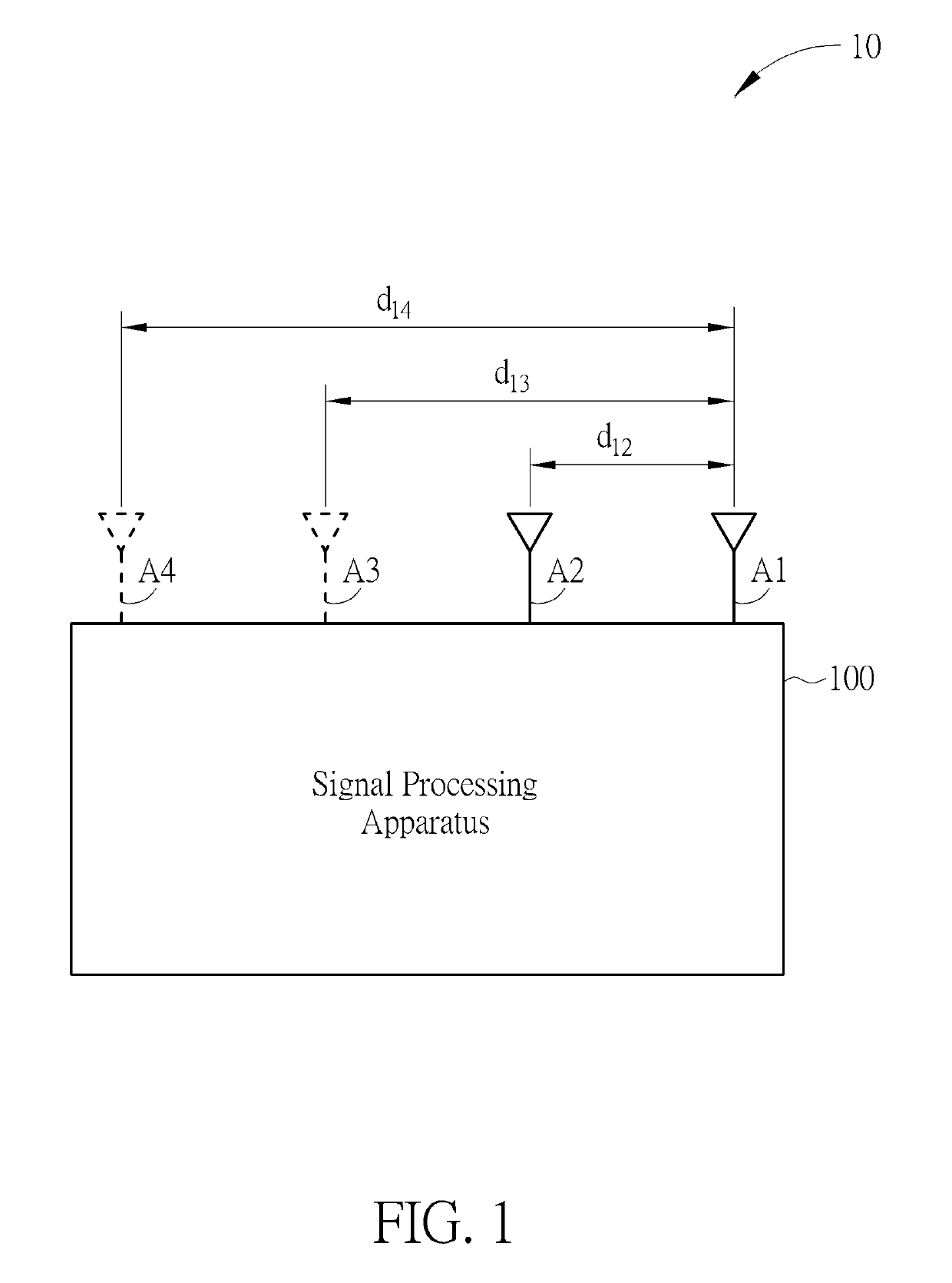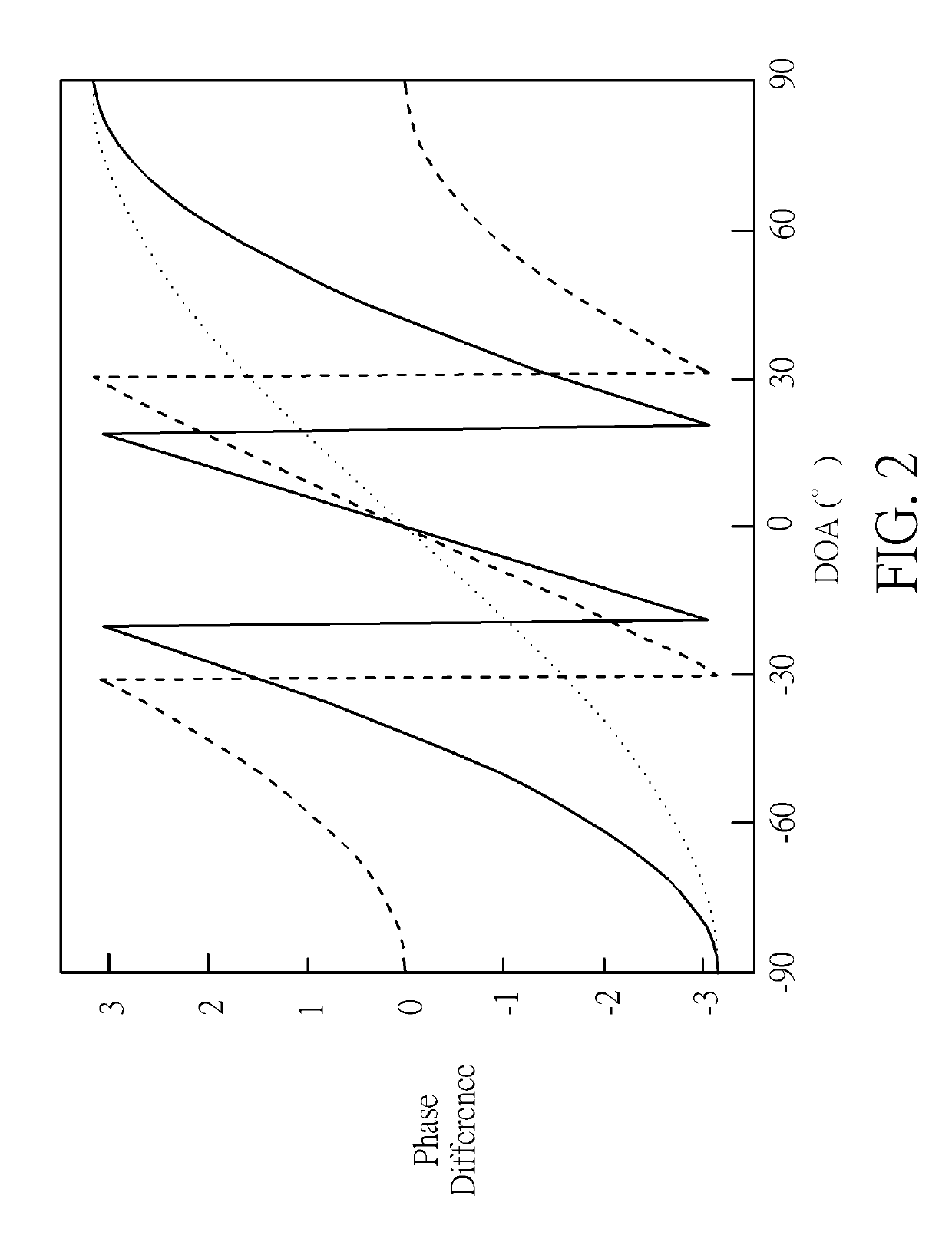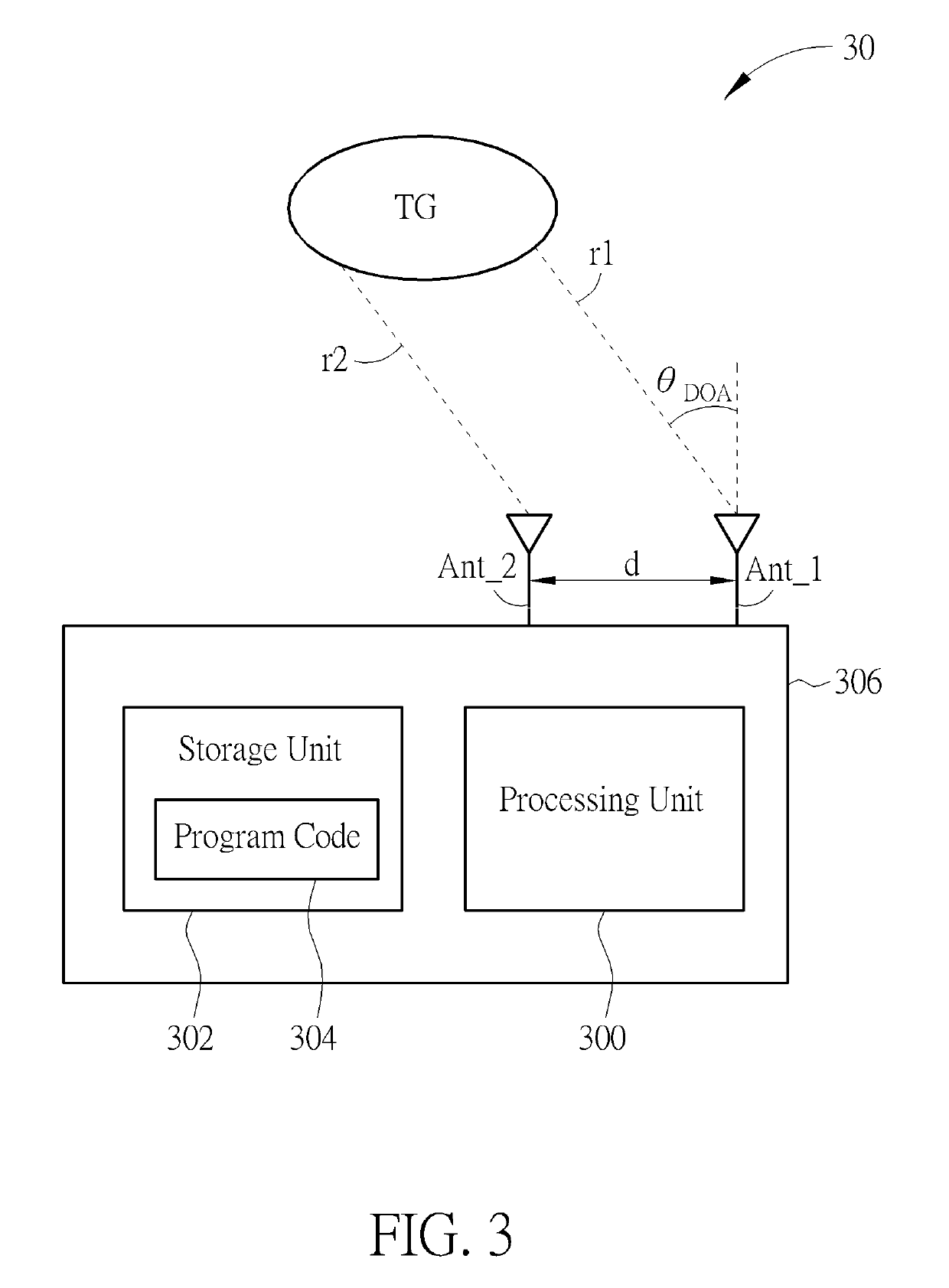Angle estimating method and radar system
a radar system and angle estimation technology, applied in the direction of instruments, measurement devices, using reradiation, etc., can solve the problems of reducing the accuracy of doa estimation, enlarge the disposing space, and the error of estimated angles in different degrees, so as to increase the disposing area of antennas and enhance angle estimation accuracy.
- Summary
- Abstract
- Description
- Claims
- Application Information
AI Technical Summary
Benefits of technology
Problems solved by technology
Method used
Image
Examples
Embodiment Construction
[0018]FIG. 1 is a schematic diagram of a radar system 10 according to an embodiment of the present invention. The radar system 10 comprises physical antennas (A1 and A2), virtual antennas (A3 and A4), and a signal processing apparatus 100. The antennas A1˜A4 form as an antenna array. The antennas A2, A3, A4 have distances d12, d13, d14 relative to the antenna A1. The antennas A1˜A4 are linearly arranged with equal spacing, i.e., the distance d13 between the antennas A1 and A3 is twice of the d12, and the distance d14 between the antennas A1 and A4 is three times of the distance d12. The antennas A1˜A4 are configured to receive signals y1˜y4 reflected from a target object. The antennas A1˜A4 are coupled to the signal processing apparatus 100. The signal processing apparatus 100 computes a direction of arrival (DOA) θ, which is a DOA of the target object, according to the signals y1˜y4. Specifically, the signal processing apparatus 100 computes phase differences φ12, φ13 and φ14 of th...
PUM
 Login to View More
Login to View More Abstract
Description
Claims
Application Information
 Login to View More
Login to View More - R&D
- Intellectual Property
- Life Sciences
- Materials
- Tech Scout
- Unparalleled Data Quality
- Higher Quality Content
- 60% Fewer Hallucinations
Browse by: Latest US Patents, China's latest patents, Technical Efficacy Thesaurus, Application Domain, Technology Topic, Popular Technical Reports.
© 2025 PatSnap. All rights reserved.Legal|Privacy policy|Modern Slavery Act Transparency Statement|Sitemap|About US| Contact US: help@patsnap.com



